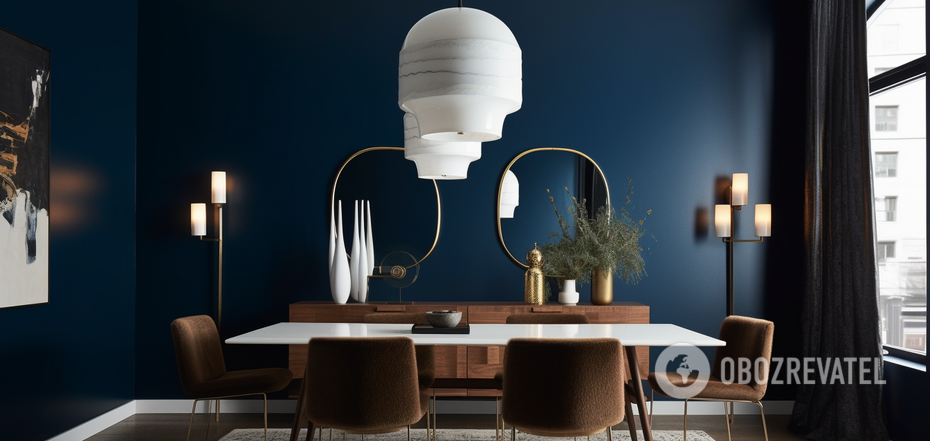Life
Never paint the walls with them: colors that ruin your mood and harm your health
When choosing the color to paint the walls, we are often guided mainly by personal preferences. However, experienced designers claim that it can affect not only visual perception but also the emotional state and mental well-being of the inhabitants of the house. Thus, the concept of a "happy room" has recently gained popularity, aiming to evoke pleasant emotions in both owners and tenants.
Homes and Gardens found out that some colors are rarely used in the design of happy rooms and explained why.
Be cautious with red
No wonder this color is called the color of passion - it has a highly intense effect on emotional states. Red is also associated with danger and anger. In the most sensitive individuals, it can trigger a fight-or-flight response, typically occurring in response to a threat, as well as stress symptoms, such as an increased heart rate, elevated body temperature, and heightened perception of external signals.
How to incorporate red into the interior? At the same time, this color represents love, strength, and motivation, and it awakens sensuality. Some researchers suggest that it helps in the production of melatonin and can improve memory. Therefore, it can be used as an accent color. The main nuance is not to overuse red in the space. Before selecting a shade, determine the feelings it evokes in you.
Yellow and its emotional impact
Sunny yellow has great decorative potential, but it can be overwhelming. Color experts even consider it the most potent color in psychological terms.
How to use yellow in the interior? Despite its emotional intensity, shades of yellow often evoke optimistic feelings - confidence and cheerfulness. However, excessive brightness can lead to feelings of irritation, nervousness, and depression. Therefore, it is advisable to opt for complex, muted, and softened shades.
Blue and its effect on mental state
The color blue has a significant influence on our state of mind and creativity. Its primary effect is to stimulate the brain. However, the reaction to it can be both positive and negative. Choosing the right shade is crucial, as the wrong one can make you feel alienated and disinterested in life. It is particularly important to avoid it in the dining room due to the unconscious association of blue food with spoilage and danger. Additionally, this color suppresses appetite.
How to incorporate blue into the interior? It is best suited for a work or study area, where it helps maintain concentration, and awareness, and has a positive effect on creativity and memory.
Subtle psychological effects of gray
Gray is considered a neutral color not only in terms of color but also in terms of emotional impact. However, for a significant proportion of people, it can evoke feelings of depression, fatigue, and a desire to withdraw from the world. Yet, this is also why it is so popular - shades of gray in the interior are chosen by people looking to create a calming, organized space that provides a respite from the fast-paced modern world.
How to incorporate gray into the interior? Depending on the tones and depth of the color, gray can be combined with nearly any other shade. It serves as an excellent background for a wide variety of bright accents and can be used to add depth to a room's space. The key is to select a shade that soothes rather than overwhelms.
Consequences of excessive use of saturated colors
The saturation, or chromatic intensity, of a color can make a room feel less happy, just as much as using any of the specific colors mentioned earlier. The deeper the shade, the more pronounced its impact on emotions. Conversely, lighter color options allow for more natural reactions and tend to have a calming effect. For instance, a darker and more intense blue color stimulates mental activity, while a lighter shade can be soothing and calming. Dark red is physically invigorating, while soft light red is physically relaxing. The depth of yellow determines the strength of its emotional effect - gentle pastel variations can evoke memories of happier times and warm, sunny days.
When using color to influence behavior, it is crucial to consider both the positive and negative associations with each color. Keep in mind that not everyone sees or feels colors in the same way. Choosing the right tone, in the right proportion and in the right place, is paramount if you want to achieve the desired effect.
OBOZREVATEL previously discussed colors that can make an interior look more luxurious and expensive.
Subscribe to OBOZREVATEL's Telegram and Viber channels to keep up with the latest developments.



























